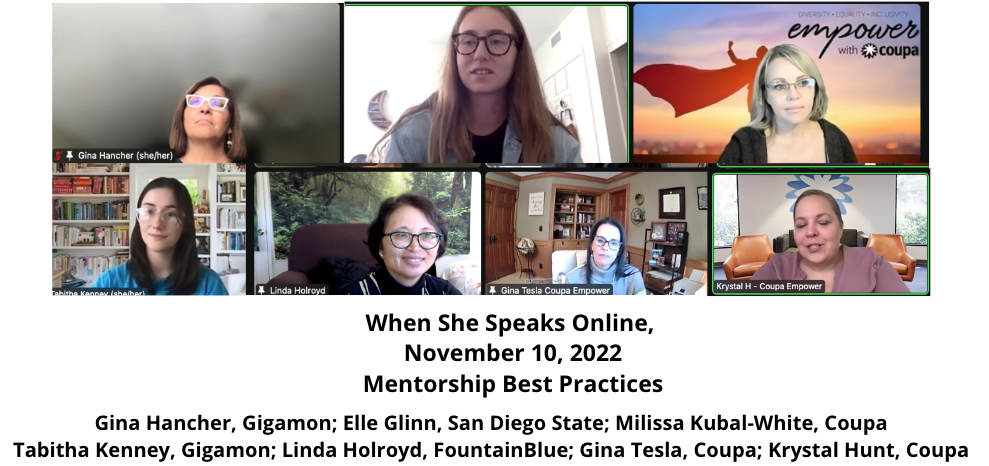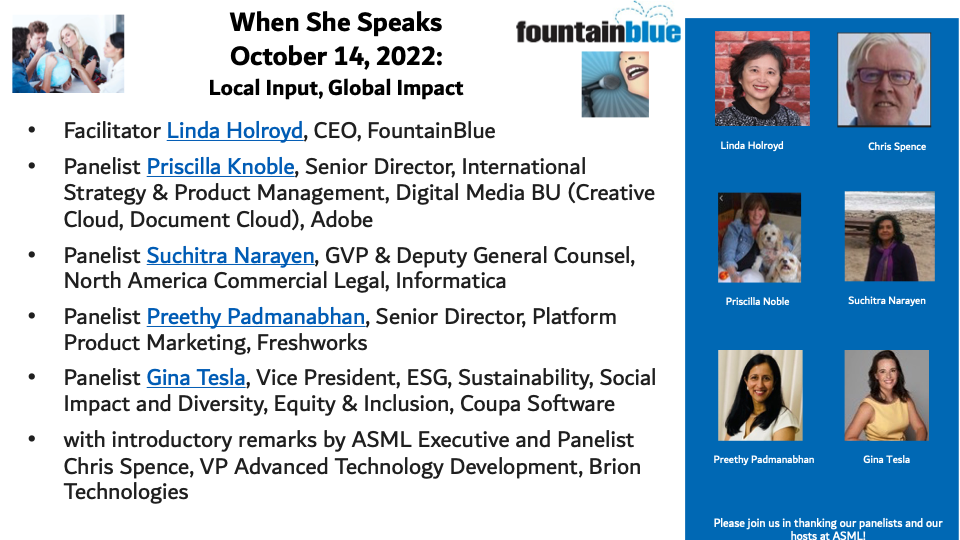FountainBlue’s December 9 When She Speaks program was on the topic of ‘Men Who Open Doors’. Please join me in thanking our hosts at Reputation and our esteemed nominees and awardees:


I was honored to facilitate such an inspiring and thought-provoking program celebrating men opening doors. Our nominees and awardees shared their thoughts on the business and personal benefits for opening doors and best practices on how to open doors for others. Below is a summary of their remarks.Our panelists spoke eloquently about how opening doors for others facilitates both innovation and leadership for the recipient and for all those they, in turn, touch.
The ‘Men Opening Doors’ Awardees had much in common:
- They each recognized how both men and women opened doors for them throughout their career and expressed a desire to give back and do the same for others.
- They are sincere and authentic communicators who truly care about the important people in their lives, and are deeply committed to the success of people they touch.
- They wholeheartedly believe in the power of innovation and collaboration and facilitate that culture into the teams and organizations they lead.
Our awardees discussed the merits of:
- providing access to opportunities to a wide range of high-potential candidates
- expressing their confidence in the abilities of others,
- making strategic introductions to new networks, and in general,
- supporting the growth and expansion of others around them for the benefit of all.
Below are some best practices shared by our Men-Who-Open-Doors Awardees:
- Provide stretch assignments to promising people and support them in building confidence and developing competence so that they can succeed.
- Be open-minded and invite diverse people and thoughts into the team and organization, for that is the foundation for innovation.
- Measure track and report on successes to support the business case for opening doors for promising others.
- Align your thinking, speaking and actions and communicate as an authentic, purpose-driven, passionate leader and continue to incrementally deliver on goals while building relationships.
- Put your people first – show up for them, be there for them, deliver for them, and work with them to address and manage both opportunities and challenges.
On reflecting on what I learned from today’s interactive and inspiring conversation, I realized that no matter where one sits in an organization, no matter what your gender or role, we should each strive to be that difference-maker, someone who makes a difference for a person, a project, a team, an organization. In this way, we can each do our part in making the world a better place.









You must be logged in to post a comment.